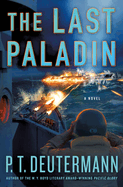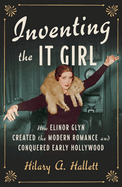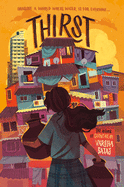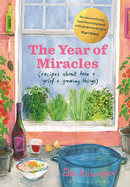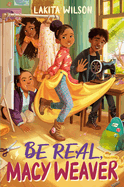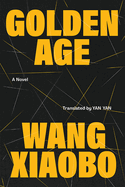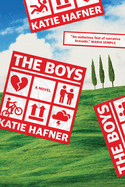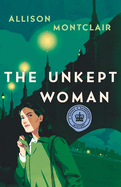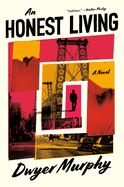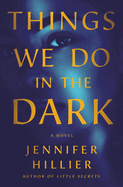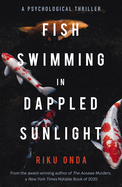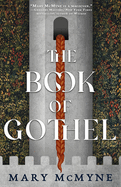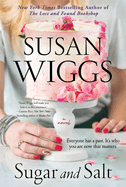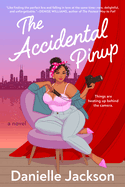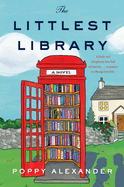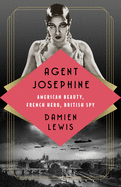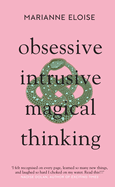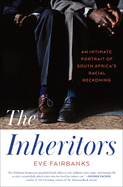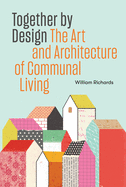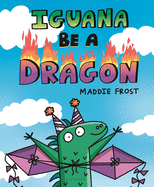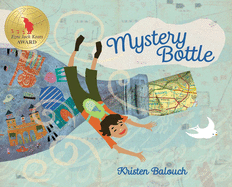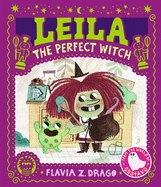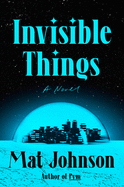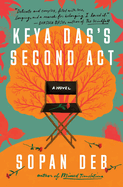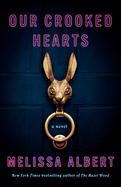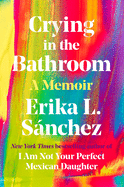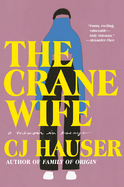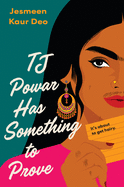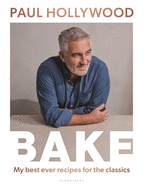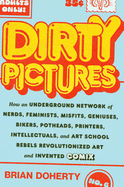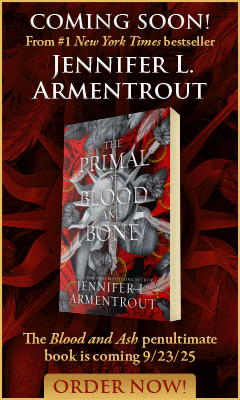Week of Friday, July 29, 2022
Among the 25 books reviewed this week: P.T. Deutermann's The Last Paladin, in which the World War II crew of the U.S.S. Holland investigates the possible existence of a 1,000-mile-long Japanese submarine "picket line"; Inventing the It Girl: How Elinor Glyn Created the Modern Romance and Conquered Early Hollywood by Hilary A. Hallett, who posits that Glyn's calling card was "her ability to give even the raciest stories an aristocratic gloss"; and Thirst by Varsha Bajaj, "a moving, hopeful story" that brings awareness to the world water crisis and social inequality.
In The Writer's Life, Antonia Angress discusses her debut novel, Sirens & Muses, centering on students at an elite New England art school.
The Last Paladin
by P.T. Deutermann
A former ship captain, P.T. Deutermann (The Last Man) brings a level of authenticity that not many authors can match to his rousing World War II thrillers. The Last Paladin sets the bar even higher. The USS Holland (DE-202) is a North Atlantic fleet destroyer escort specializing in anti-submarine warfare that receives transfer orders to the Pacific in 1944. The Holland's commanding officer (or CO) is Mariano deTomasi, a second-generation American of Sicilian heritage, who has a score to settle with the Japanese for the loss of his men at Pearl Harbor in 1941. His executive officer, Ephraim Edmonds Enright (known to all as "Eeep"), is the second-in-command and, aboard the ship, provides the brains to the CO's brawn.
Receiving a chilly reception from arrogant PacFleet officers, the crew of the Holland is sent off to investigate the possible existence of a Japanese submarine "picket line" a thousand miles long, positioned to sink every American aircraft carrier and destroyer that stumbles across its path. PacFleet does not expect much from Holland but is forced to eat crow when the battle-hardened Atlantic Fleet ship sinks six Japanese subs in 12 days' time. In fact, the story is based upon the real-life exploits of the USS England, which achieved this unparalleled feat. The combat scenes are top-notch and as authentic as they come, as are the more brutal aspects of warfare on the high seas. Readers of World War II thrillers will find Deutermann a trusted and skilled storyteller with lean prose and likable, uncomplicated characters. The Last Paladin does not disappoint. --Peggy Kurkowski, book reviewer and copywriter in Denver
Discover: The fictionalized account of a real U.S. destroyer escort that sank six Japanese submarines is the latest in P.T. Deutermann's growing catalog of knuckle-biter World War II thrillers.
Golden Age
by Wang Xiaobo, transl. by Yan Yan
After first becoming widely available to Chinese readers in the mid-1990s, Golden Age survived early controversy to become a subversive classic. This new translation by Yan Yan captures Wang Xiaobo's absurdist sense of humor, as well as the grimly amusing satire of China's Cultural Revolution that lurks within it. As Michael Berry states in his introduction, by the time Golden Age arrived on the scene, "all narrative possibilities about the Cultural Revolution had seemingly been exhausted." Golden Age takes a new, defiantly irreverent approach, reimagining the turbulent era from the perspective of a sex-obsessed, educated youth sent down to the Yunnan countryside.
The novel takes place in three distinct periods of protagonist Wang Er's life. His time spent in Yunnan is his golden age, before he understood that "life is but a slow drawn-out process of getting your balls crushed." This first period is preoccupied with Wang Er's wild adventures and sexual escapades with Chen Qingyang, which earn them both endless rounds of criticism sessions and written confessions. Golden Age doesn't ignore the bitter reality of these persecutions--in a vivid scene later in the book, an academic is driven to suicide.
The seriousness of the subject matter, however, never gets in the way of the novel's penchant for black comedy and lewd jokes. As Wang Er settles down to become a university professor, the novel finds new satirical targets in the ridiculous squabbles of academia as well as Wang Er's still-chaotic love life. Golden Age is never less than entertaining, its sharp insights existing alongside endless sexual innuendo and jokes that mine humor from the darkest recesses of Chinese history. --Hank Stephenson, the Sun magazine, manuscript reader
Discover: Golden Age is an absurdist Chinese classic that takes a blackly comic look back at China's Cultural Revolution.
The Boys
by Katie Hafner
The charming, witty love story between solitary Ethan and "people person" Barb in The Boys includes a plot twist that invites an immediate reread and will have readers looking for the "aha!" clue that reveals how Katie Hafner (Mother Daughter Me) so thoughtfully constructed her first novel.
"My romance with Barb played out at megahertz speed," Ethan recalls in this first-person narrative. A romantic date at a jukebox diner leads to a "joined at the proverbial hip" relationship for the endearing couple. Vivacious research psychologist Barb adores tech-nerd Ethan, who relishes her affection. "You're a pearl," Barb says. "You're this beautiful object formed from all the grit inside the oyster shell." But Ethan knows the grit remains, residue from a childhood tragedy he can't articulate to Barb. When they learn their happy marriage won't produce children, Barb surprises Ethan by offering to foster eight-year-old orphaned twins. Ethan's protectiveness turns to obsession with the boys' well-being, when the 2020 pandemic lockdown occurs, unwittingly excluding Barb and jeopardizing the marriage. In a chapter related in a third-person perspective, Ethan takes the boys on a bicycle tour to Italy, where a thoughtful young tour guide leads Ethan to self-realization and healing.
Likable characters whose flaws are limited to an excess of love and compassion flourish in a plot that journalist Hafner infuses with details from her years of science and music writing. The novel also possesses a generosity of spirit for Ethan and Barb--and a well-deserved, heartwarming affirmation of their love. --Cheryl McKeon, Book House of Stuyvesant Plaza, Albany, N.Y.
Discover: Becoming foster parents to twin boys jeopardizes a happy marriage, but a stunning plot twist leads to a satisfying, compassionate resolution.
Reward System: Stories
by Jem Calder
Reward System, Jem Calder's debut, is a collection of a half-dozen interlocking stories built loosely around the title's reference to dopamine pleasure responses, the neurological reward so easily manipulated by social media. But Calder's stories are no anti-tech polemic; instead, they are intensely focused observations on ordinary things: a meeting that could have been an e-mail; the need to reverse the autocorrected "we'll" to the intended "*well" in a text; the way memory can hijack the present. Each moment is a specimen under the microscope, the magnification rendering it intimately recognizable, while also shedding light on its detachment from reality.
Calder's stories feature Nick and Julia--20-somethings who used to date--and their faltering steps in career, love and self-knowledge. Through them, Calder tackles the things humans do to feel loved and seen. In the story "Distraction from Sadness Is Not the Same Thing as Happiness," the main characters aren't even named, noted only as "the female user" and "the male user" of an unnamed, algorithm-based dating app. Calder captures the ambiguity of such social interactions, while meditating on time and space in our technologically mediated culture: "Sometimes the female user felt like everything that happened inside a device, in screen time, occurred in something like the present, while everything that happened outside of one, in real time, occurred in something like the past." Reward System rarely confronts readers directly, choosing instead to hold up countless small mirrors, uncanny iterations of self that demand thoughtful reflection on human desires and needs. --Sara Beth West, freelance reviewer and librarian
Discover: In Reward System, debut author Jem Calder assembles a half dozen interlocking stories that reveal the inner workings of human desire through ordinary and often technologically mediated realities.
Mystery & Thriller
The Unkept Woman
by Allison Montclair
After several murder investigations, savvy business partners Iris Sparks and Gwendolyn Bainbridge are settling back into matchmaking with their Right Sort Marriage Bureau. But when an unknown woman claiming to be a Polish spy follows Iris home to her flat--then ends up fatally shot in that same flat--both women dive into the case to clear Iris's name. Allison Montclair (A Rogue's Company; The Right Sort of Man) weaves together wartime intelligence work, romances past and (potential) present, and the complexities of friendship in The Unkept Woman, her fourth entry in the Sparks & Bainbridge mystery series.
Readers of Montclair's previous mysteries will recognize some characters: aspiring playwright Sally (short for Salvatore); Iris's former intelligence colleagues; Gwen's young son, Ronnie, and her overbearing in-laws. But Montclair gives enough context (and the mystery is sufficiently twisty) to pull in anyone interested in a narrative that juxtaposes Britain's wartime secrets and the daily struggles of two women trying to carve out their own lives. Gwen's ongoing battle to regain custody of Ronnie (which involves emotional and legal challenges) makes her hesitant at first to get involved in another murder, but her friendship with Iris, and her natural curiosity, ultimately prevail. Iris, for her part, is determined to solve the case not only because she's a suspect, but because the circumstances involve at least two of her exes and the work they all hold in high regard.
Full of wry banter and red herrings, The Unkept Woman is a delightful British mystery with a strong friendship at its center. --Katie Noah Gibson, blogger at Cakes, Tea and Dreams
Discover: Allison Montclair's witty fourth mystery in the Sparks & Bainbridge mystery series weaves together wartime intelligence work and a strong friendship between its two protagonists.
An Honest Living
by Dwyer Murphy
Though it's probably too soon to feel nostalgia for 2005, when Dwyer Murphy's An Honest Living begins, this territory-marking debut is seductively steeped in motifs reminiscent of the golden age of noir. Fans of the genre will likely be nodding appreciatively from the introduction of a mysterious woman out to get her husband, which launches this story, to the concluding shot of a vintage car.
The narrator, whose name recalls the author's, is a Brooklyn-based lawyer. Disillusioned with corporate life, he's forging a solo practice. As the novel opens, he's at a private library in Manhattan where book dealers and aficionados are gathered: his new client is paying him $10,000 to catch her dealer husband trying to sell some rare books that belong to her. "Something about the case bothered me from the start," admits the narrator. "Whatever it was, I managed to put it out of mind." Naturally, he shouldn't have done that.
An Honest Living checks every noir box but one. In one of the novel's meta moments, a literary novelist explains why she's writing a crime novel: "There's something to be said for that kind of efficiency." Efficiency isn't what Murphy is going for: the novel has a languid pace, with stops for digressions. But readers' patience will be reliably rewarded not just by the noirish touches but also by the impeccable sentences, which often capture ever-changing New York: "Around us was empty air and dug-out earth but you could almost feel the buildings underfoot, ready to break through the surface like stalks looking for sun." --Nell Beram, author and freelance writer
Discover: In a debut novel that checks most of the noir boxes, a lawyer is hired by a mysterious woman to catch her husband, a book dealer trying to sell some rare books that belong to her.
Things We Do in the Dark
by Jennifer Hillier
Myriad things, mostly bad, happen in the dark: human monsters step out to prey on the vulnerable. But sometimes those with the strongest willpower find their strength arising from the ashes of terrible situations, as does Paris Peralta in Things We Do in the Dark, Jennifer Hillier's superb psychological thriller about survival.
Paris lived through horrific child abuse at the hands of her mother and sexual attacks from her mother's many boyfriends. She not only survived but also reinvented herself with a new identity, moved to Seattle and married Jimmy Peralta, once a popular and successful comedian. But her carefully curated life and long-held secrets may be exposed when she's arrested for murdering Jimmy, who was just about to launch a lucrative comeback. Tabloid headlines pounce on the facts: Paris was holding the bloody straight razor, and she's almost 30 years younger than the wealthy Jimmy. The press also ridicules her Filipino heritage. As Paris deals with her legal problems, Canadian journalist-turned-crime podcaster Drew Malcolm begins work on a project about Ruby Reyes, nicknamed the Ice Queen, who is being paroled after serving 25 years of a life sentence for murdering her rich, married lover.
This seventh novel from Hillier (Little Secrets; Jar of Hearts) moves briskly, with believable twists and emotionally damaged characters who refuse to allow their pasts to rule their present lives. Though the connection to the two plot threads may be obvious, Hillier skillfully ladles intense emotion and realism as Things We Do in the Dark reaches its jaw-dropping denouement. --Oline H. Cogdill, freelance reviewer
Discover: A woman who suffered a childhood of abuse is accused of murdering her much older, famous husband in this superb psychological thriller.
Fish Swimming in Dappled Sunlight
by Riku Onda, transl. by Alison Watts
Following the notable success of The Aosawa Murders, prolific, award-winning Japanese author Riku Onda reunites with translator Alison Watts for Fish Swimming in Dappled Sunlight, another riveting, tightly plotted psychological thriller. "This, I guess you could say," the novel opens, "is the story of a photo." That first paragraph continues to tease with mentions of mystery, death, "a certain man" and the "break-up of a couple," all details that will be scrutinized by two 20-somethings spending their last night together in an almost empty Tokyo apartment.
Aki and Hiro prepare for their final evening with food, drink and overwhelming tension. Hiro plans to move in with another woman the next day; Aki is already packed for a visit to Vietnam. Their "honeymoon period" is long past, making "this last year... an endurance test." What changed, they will at least agree, was what happened during a mountain hiking trip "and the death of that man." Suspicions have since continued to build, both convinced that the other must have been the murderer, each determined to elicit a confession by morning.
Onda is an expertly sly storyteller, deft with digressions and diversions. Seemingly simple statements--"That's a lie"--are hardly so straightforward and prove to be multilayered clues to more intricate reveals. But neither of her protagonists is a particularly reliable narrator. Onda ingeniously manipulates captivated readers as she interrogates the instability of memories, how well we can ever really know one another and the capricious nature of love--and revenge. --Terry Hong, Smithsonian BookDragon
Discover: Japanese writer Riku Onda and translator Alison Watts return for a second collaboration, another deftly layered, enticingly manipulative psychological thriller.
Science Fiction & Fantasy
The Book of Gothel
by Mary McMyne
The witch has her say about the story of Rapunzel in The Book of Gothel, the layered historical fantasy debut from Mary McMyne. Haelewise has suffered fainting spells since her childhood; her mother tries every remedy she knows to cure them, even allowing her father to take her for repeated exorcisms. No matter how much talent Haelewise shows as an apprentice midwife to her mother, the rest of the village fears her, even considering her skills to be cause for more suspicion. She finds, not long after her mother's death, that she is no longer safe in her village. She sets off in search of a tower, one from her mother's stories, in which only women can find refuge. But along with the tower she discovers a secret sisterhood, which she will need for traveling to convents and castles to keep safe.
McMyne skillfully combines folklore and history with prose that showcases her work as a poet. Although she takes the fairy tale "Rapunzel" as a source, she has crafted it into a world all her own, featuring historical figures such as Hildegard of Bingen, grounded in its own stories and religions--and with just enough detail. This story is complete, but if McMyne wanted to write more about Haelewise's life or a book from the perspective of another resident of the tower, she would have ample room to explore further.
Readers who enjoyed Circe by Madeline Miller, Wicked by Gregory Maguire and the Avalon series by Marion Zimmer Bradley and Diana L. Paxson will be well-pleased. --Kristen Allen-Vogel, information services librarian at Dayton Metro Library
Discover: Rapunzel's witch tells the lush tale of an isolated refuge for women in this reinterpretation of a classic.
Romance
Sugar and Salt
by Susan Wiggs
Lingering difficulties from the past simmer throughout Sugar and Salt, a compassionate and poignant work of domestic fiction by Susan Wiggs. Through a staggered timeline, Wiggs (The Lost and Found Bookshop; Return to Willow Lake) builds a romance between two characters who come from vastly different backgrounds. Margot Salton, a white woman from Texas, traveled a long, hard road to become an award-winning chef. As a teenager, she forged her own way in the world after her single mother, a talented cook, died. Margot, tough, street-smart and self-reliant, was taken in and mentored by a kind, hardworking Black couple, owners of an authentic Texas barbecue restaurant, until a second tragedy upended Margot's life.
Determined to cut her losses and start anew, budding barbecue master Margot changes her identity and sets off, leaving Texas behind and winding up in San Francisco, Calif.. There she meets Jerome Sugar, a Black baker who learned everything he knows from his grandmother Ida, a self-made chef. The single father of two operates Sugar, Ida's well-established, popular bakery. Margot and Jerome work out a deal to share kitchen space and she opens her own restaurant next door called Salt. The two form a professional bond that leads to romance. However, the couple's relationship is tested when complications from Margot's former Texas life resurface. Can love in the present survive far-reaching tentacles from a sordid past?
Hot-button issues from real-life events inspired Wiggs to write this complex, thought-provoking novel that depicts how the power of friendship and love can overcome heart-wrenching challenges. --Kathleen Gerard, blogger at Reading Between the Lines
Discover: In a compassionate, moving story, two chefs from different worlds, their relationship tested by the past, join forces in business and love.
The Accidental Pinup
by Danielle Jackson
Danielle Jackson brings humor and heat to The Accidental Pinup, her debut romance and a body-positive love letter to Chicago, photography and found family. When Cassie Harris's pregnant best friend, a queer fashion influencer and designer named Dana, is put on bed rest, Cassie sets aside her dream job to take on Dana's role as model for a new line of lingerie and swimwear. Luscious Lingerie had promised that Cassie would photograph Dana's line, finally guaranteeing Cassie a prestige role long denied her as a Black female photographer in a competitive niche, but now, as a model, Cassie must work with a rival photographer. Reid Montgomery, "the thorn in Cassie's professional side," has consistently stood in the way of her success.
As Cassie and Reid explore the city, looking for the perfect backdrops for Dana's inclusive, quirky line, their initial impressions and wariness are replaced by respect, artistic admiration and a simmering heat that boils over in a rather unprofessional way. The Accidental Pinup is told in dual perspectives, meaning that while readers will develop a quick and powerful protectiveness toward Cassie, they'll empathize with Reid as they learn of his difficult upbringing and sense of familial and financial obligation to his much younger brother.
The romance remains central, but readers will savor the moments Jackson dedicates to the way Cassie captures light, joy and quiet beauty in her photographs. With a cheeky, subversive lens, The Accidental Pinup claims space for Cassie's dreams, gives readers a satisfying happily-ever-after and neatly sets up possible sequels. --Suzanne Krohn, librarian and freelance reviewer
Discover: This debut interracial romance, set in Chicago, will delight readers interested in pinup photography, intimate fashion and women finding love while making space for their dreams.
The Littlest Library
by Poppy Alexander
Poppy Alexander (25 Days 'Til Christmas) brings readers a heartwarming, summery tale of second chances in The Littlest Library. Featuring an unexpectedly resilient librarian who faces trauma from her past and uses her books to bring together the residents of a charming English village, the novel speaks to the power of literature to change lives.
Jess Metcalfe, who was orphaned as a child, has been left reeling by the recent death of her beloved Mimi, the grandmother who raised her. Already unsure what to do with her empty life sans Mimi and after being laid off from her library job, Jess finds herself aimlessly driving through the English countryside and buying a cottage on a whim. Ivy Cottage comes with a classic red phone box in its yard, and Jess decides to turn it into a tiny library, filling it with Mimi's book collection. Slowly, Jess finds herself letting go of her lifelong anxieties and finding friendship--and possibly love--in the process.
Sweet and funny, The Littlest Library is perfect for fans of Sophie Kinsella or Jenny Colgan. The village of Middlemass is full of a hilarious assortment of characters, including reluctant stay-at-home mum Becky; Aidan, the attractive tree surgeon; and Joan and Muriel, sisters who have refused to speak to each other for more than 30 years. Jess finds herself connecting with many of them, playing matchmaker, job-finder and book-recommender to everyone she meets. The Littlest Library is a lovable novel, perfect for reading on a sunny summer afternoon. --Jessica Howard, freelance book reviewer
Discover: In this heartwarming novel, a lonely Englishwoman creates a tiny library in a former phone box, forever altering the lives of the villagers who come to love it.
Food & Wine
The Year of Miracles: Recipes about Love + Grief + Growing Things
by Ella Risbridger
After losing her beloved partner, Jim, writer and home cook Ella Risbridger (Midnight Chicken) found herself in a tailspin. Soon after she moved into a new flat with her friend Jo, the Covid-19 pandemic sent London and the world into lockdown. In her second memoir-cum-cookbook, The Year of Miracles, Risbridger recounts a year of cooking and community, and how both provided healing in a time of great internal and external strain.
In these essays and recipes, Risbridger rambles charmingly. The narrative begins in winter, with a chicken carcass (being picked over at 4 a.m., naturally), then takeaway and "Leftovers Pie." As Jo and Ella settle into their new flat, Ella shares glimpses of (and sometimes recipes for) their more robust favorites, such as cardamom buns from the café she loves; eggs half a dozen ways (Turkish, Welsh, an omelet involving salt and vinegar crisps); and various soups both nourishing and comforting. Readers meet Mitski, the next-door cat who isn't theirs but comes over for scraps; various other friends in and out of London who help Jo and Ella stay sane; and Jim, often conspicuous by his absence but a presence just the same.
Watercolor illustrations bring the recipes to life, contributing to the book's slightly dreamy feel. Risbridger's recipes, both in form and content, swing between simple and fiddly, though all are within reach of dedicated home cooks. Risbridger writes sensitively about grief and navigates her loss honestly, relying on community. The book is a tribute, as Risbridger says, to "cooking, and the people who love you: the two greatest and most practical miracles of all." --Katie Noah Gibson, blogger at Cakes, Tea and Dreams
Discover: Ella Risbridger chronicles a year of cooking and community amid grief and the first Covid-19 lockdown in London.
Biography & Memoir
Inventing the It Girl: How Elinor Glyn Created the Modern Romance and Conquered Early Hollywood
by Hilary A. Hallett
The writer Elinor Glyn (1864-1943) was extravagantly vain, unapologetically snobbish, flagrantly money-minded and of unremarkable literary talent. But Hilary A. Hallett's Inventing the It Girl: How Elinor Glyn Created the Modern Romance and Conquered Early Hollywood demonstrates that Glyn, having "done her part to let loose the genie of women's sexual liberation," is an undersung feminist trailblazer ripe for a biography.
Born on the island of Jersey, England, Glyn developed her passion for books in her stepfather's library and her taste for the finer things following a trip to Belle Époque Paris as a teenager. A middle-class child of the Victorian era, Glyn married up--she landed a proper English gentleman--and soon learned that, as she would write, "brains did not count" when one was the mistress of an estate. But her husband had a gambling problem and the family needed money, so Glyn sought what was then considered an unsuitable job for an upper-class woman: professional writer.
Glyn had success with her books, especially Three Weeks, her scandalously steamy and occasionally banned 1907 romance novel. Given Glyn's crowd-pleasing notoriety, it's no wonder that Jesse Lasky, vice-president of production at Famous Players-Lasky Studio, invited her to Hollywood to write for the movies. In the film world as in the literary one, Glyn's calling card was her ability to give even the raciest stories an aristocratic gloss.
Exhaustively researched and decked out with 50-odd photos and reproductions, Inventing the It Girl is rich with history. Hallett (Go West, Young Women!) is utterly persuasive regarding the beneficent influence of Glyn. --Nell Beram, author and freelance writer
Discover: This tip-top biography of the British novelist turned early-Hollywood screenwriter salutes her for writing of women's sexual desire at a time when they weren't supposed to admit to feeling any.
Agent Josephine: American Beauty, French Hero, British Spy
by Damien Lewis
With so many books published about World War II, it is hard to imagine reading a new one. And yet, with Agent Josephine journalist and bestselling author Damien Lewis delivers one that will tempt readers to do just that.
Josephine Baker was a Black girl born into poverty in St. Louis in the early days of the 20th century. Though immensely talented and eager to perform from an early age, she was largely shut out of her home country, thanks to its brutal segregation laws. But she found a welcome audience in Europe and became a Parisian star, lauded by Hemingway, painted by Picasso and legendary for her singing, dancing and bold onstage sexuality--until the arrival of the Nazis, whose repellent ideology forced Josephine away from the stages and city she loved. In a courageous effort, Josephine turned spy, working with British intelligence and French Resistance fighters to liberate a continent.
Lewis (The Flame of Resistance) writes with a flair for hard-boiled drama, sharing insights into the clandestine world of espionage and its nests of expert, aristocratic spymasters; hard-living, shrewd field agents; and debonair mafiosos with their hideous henchmen. The drama is balanced with lively details. Readers will delight in tales of Josephine with her entourage of animals, including a pet cheetah named Chiquita, and fall for a narrative that almost resembles a friends-to-lovers romance, were it not for the immense stakes and horrifying consequences of failure. Agent Josephine is a wonderful addition to the canon of World War II stories. --Walker Minot, teacher, freelance writer and reviewer
Discover: Strap in for a ride around the world with legendary singer and spy Josephine Baker in a desperate effort to thwart the Nazis and save the world for democracy.
Obsessive, Intrusive, Magical Thinking
by Marianne Eloise
Obsessive, Intrusive, Magical Thinking is a spirited collection of appealingly honest essays by British writer, journalist and media star Marianne Eloise about her autism spectrum disorder and the anxiety, obsessions and intrusive thoughts that are inseparable features of her neurodivergent brain. While describing the added challenges of growing up in an unstable family environment, the physical pain resulting from her Ehlers-Danlos syndrome and the hormonal minefield that was puberty, Eloise cautiously celebrates the life she has designed for herself.
Obsessive, Intrusive, Magical Thinking, organized into three sections, offers fragmented vignettes and a nonlinear narrative style that reflects the author's overactive mind as it latches on to topics from "death to Medusa to folklore to magic to Disneyland to fire to my corporeal form." Although her obsessions led to social isolation in childhood, Eloise parlayed her "good obsessions" with film and music into a master's degree and a successful career that included traveling to Los Angeles, her dream city across the Atlantic. In the essay "Does the Dog Die?" Eloise describes in poignant detail how her dog, Bowie, taught her "to love, to relax," noting that the kinship she feels toward animals is stronger than toward humans. "Where some obsessions have destroyed me, others have sustained me," she explains; this includes her joyful fascination with Disneyland and her intense love of the ocean.
Disarming in its authenticity, Eloise's debut is the mark of a talented writer, claiming literary space for courageous neurodiverse voices like hers and sharing the pitfalls of her journey to ease the path for those who come after her. --Shahina Piyarali, reviewer
Discover: A British writer and journalist with a devoted media following shares stories from her anxious, obsessive life on the autism spectrum and the restorative power of her visits to Disneyland.
Social Science
The Inheritors: An Intimate Portrait of South Africa's Racial Reckoning
by Eve Fairbanks
South African apartheid ended in 1994, but the past lingers painfully in the country's institutions and the minds of its people, as journalist Eve Fairbanks recounts in her first book, The Inheritors: An Intimate Portrait of South Africa's Racial Reckoning. Eleven years in the making, this mesmerizing analysis of South Africans navigating a world that changed almost overnight follows three ordinary South Africans over five tumultuous decades: Dipuo, an anti-apartheid activist in the 1980s; her daughter, Malaika; and Christo, one of the last white South Africans drafted into the military to enforce apartheid.
Chronicling the shifting attitudes and emotions of her three subjects, Fairbanks creates an intimate and empathetic portrait of South Africans wrestling with new political, social and economic realities. Dipuo begins as a young, outspoken woman not above violence to achieve the end of apartheid, but who experiences an array of disappointments with Black political leadership in her later years. Malaika inherits her mother's early rage and lashes out at "the drip-drip quality of white people's concessions" in which "every curriculum change was a fight, every move to make a black person the head of a leading bank or university" an exhausting one. Christo, the ex-soldier who hints at his regrets for his own role, comes nearly full circle, "willing to turn himself into a pariah" with the creation of an all-white, all-Afrikaner dorm. The Inheritors is a deeply felt and eloquently written account of a nation--and its people--still wrestling with angry ghosts of the past. --Peggy Kurkowski, book reviewer and copywriter in Denver
Discover: Through detailed research and interviews, Eve Fairbanks follows three South Africans over five decades to reveal the economic, cultural and psychological impacts of a nation changed overnight.
House & Home
Together by Design: The Art and Architecture of Communal Living
by William Richards
For many readers, "communal living" will call to mind the hippie houses of the 1960s and '70s, in which meetings were mandatory and clothing was optional. William Richards handily vanquishes such outdated thinking in Together by Design: The Art and Architecture of Communal Living, which is part architecture book, part sociology text and 100% homage.
Going with the idea that "architecture has always provided a vessel for individuals and communities to live their beliefs," Richards proceeds to make a persuasive case that communal living and cohousing can offer solutions to a raft of social ills, among them housing scarcity, loneliness and wasted resources. Together by Design, informed by Richards's interviews with cohousing architects and residents, spotlights a clutch of innovative projects, including London's New Ground Cohousing, whose senior-friendly design decisions were influenced by its residents; a facility in coastal Maine created for a three-couple group of friends, who live in separate but connected homes with common amenities; and Sweden's Suderbyn, which carries the expectation that all residents share one philosophy.
Richards (Revolt and Reform in Architecture's Academy; Bamboo Contemporary) admits that Suderbyn, which is "on the extreme end of the spectrum of ecological living and prescriptive communal and individual behaviors," is "not for everyone, even if everyone might benefit from spending a few days there." Readers can gauge the salubriousness of a stay at any of the featured residences with the help of the book's abundant photos, drawings and plans, among them a memorable shot of Suderbyn's compost toilet. --Nell Beram, author and freelance writer
Discover: Together by Design makes a persuasive case that communal living and cohousing can offer solutions to a raft of social ills, including housing scarcity, loneliness and wasted resources.
Children's & Young Adult
Thirst
by Varsha Bajaj
Varsha Bajaj (Count Me In) brings awareness to the world water crisis and social inequality with Thirst, a moving, hopeful story.
Water surrounds 12-year-old Minni's island city of Mumbai, but most of the people Minni knows struggle to get enough of it. When Minni's brother, Sanjay, witnesses a "water mafia" stealing water from the community, their parents decide it'd be safer for everyone if he left home. Just as Minni is getting used to Sanjay being gone, her mother gets sick--something that's happening more often lately--and goes to her home village to convalesce. Minni must take over her mother's job cleaning a rich family's house, where she discovers information that could help shut down the mafia. Now she must figure out how to share what she knows without exposing her family.
In Thirst, Bajaj thoughtfully examines class and privilege, making topics like water access and income inequality accessible to middle-grade readers. Bajaj shows how a lack of clean water, decent health care and education can affect people's lives. Minni can't focus on schoolwork because she's hungry and exhausted; anger, fear and frustration frequently play out in the water line; and people adapt just to survive their environment (e.g., boiling water to fend off diseases). Water may not flow freely like it does in the high-rise Minni works in, but community and hope do. A sense of togetherness--whether it's Minni's aunties bringing her food or the school guard allowing her to enter school late--pulses through this meaningful narrative. --Lana Barnes, freelance reviewer and proofreader
Discover: In this moving, hopeful story about the world water crisis, a girl from a poor Mumbai neighborhood discovers information that could shut down a water thieving operation.
Be Real, Macy Weaver
by Lakita Wilson
Lakita Wilson, author of several Who HQ Now series titles, gives middle-grade readers an earnest and lighthearted novel that offers an honest look at friendships.
Eleven-year-old Macy Weaver is dumped by her best friend right before summer break. The Weavers then move from their hometown in South Carolina to a run-down apartment in Maryland, where Macy's mother will be attending college. Macy sees the move as an opportunity: she will reinvent herself and make a new best friend. At school, Macy becomes attached to Brynn, a fashion-loving sixth-grader who hopes to become a model. Macy is so desperate to be Brynn's best friend that she lies and says her mom is a fashion photographer. But Brynn's best friend Grace feels like something is off with Macy. If her lies are exposed, will Macy have the courage to share with Brynn--and the school--who she really is?
In addition to friendship, Wilson's contemporary novel touches on subjects like family, social class and anxiety. Wilson excellently parallels Macy's growth with that of other characters. For example, Macy's classmate Pax helps her tap into an actual talent for fashion as he learns to stand up for himself. The author also uses the fallibility of adult characters to fuel Macy's development. Macy's mom focuses more on school than Macy, which causes Macy major anxiety and makes her more attached to the idea of making a new best friend. Be Real, Macy Weaver is an authentic look into middle-grade friendships, family and identity. --Kharissa Kenner, children's librarian, Bank Street School for Children
Discover: Sixth-grader Macy Weaver learns that making a best friend is less about being someone you are not and more about being yourself in this genuine, sincere novel.
Iguana Be a Dragon
by Maddie Frost
Maddie Frost (Smug Seagull) extolls the power of self-acceptance in the punnily-titled Iguana Be a Dragon, a hilarious, eye-catching comic-style picture book about an insecure iguana who makes a big splash with his new neighbors.
When Iguana, a spindly-fingered emerald lizard with jauntily askew spines, moves into a new neighborhood, he promptly receives an anxiety-generating invitation to a pool party with "amazing" animals, including speedy host Cheetah. He finds his own qualities pedestrian by comparison: "Iguanas are green. They enjoy the sun. They're green." Then cosplay inspiration strikes. With two party hat "horns" and a pair of kite "wings," Iguana can pass as an amazing fire-breathing dragon. Determined to make an en flambé entrance, he gobbles down spicy treats until he belches a gout of flame that blasts him across town and directly into Cheetah's pool. His disguise washes away, but he accidentally wins a race with his speedy swimming. The other animals are impressed with his aquatic abilities and applaud his climbing skills, sense of humor and thoughtfulness. Relaxing on a float, Iguana smiles as he realizes being himself is "pretty amazing."
Frost's candy-colored palette and geometric patterned backgrounds offer a visual delight for young children while calling up adult readers' nostalgia for 1990s cartoon series. Interspersed comic panels keep the pacing lively and will give young readers a taste of the graphic novel format. This joyful, unabashedly offbeat celebration of personal authenticity affirms the beauty of individuality, though it may give dragons a case of iguana envy. --Jaclyn Fulwood, youth experience manager, Dayton Metro Library
Discover: An insecure iguana dresses as a dragon with hilarious and affirming results in this joyful, brilliantly silly picture book.
Mystery Bottle
by Kristen Balouch
With all due respect to the Disney earworm, it's not really a small world. Making the great big planet seem that much less so is Kristen Balouch's exhilarating picture book Mystery Bottle, in which a child is brought geographically closer to a faraway grandparent thanks to some magic and the postal service.
One day Brooklyn-dwelling narrator Bailey receives a package in the mail from Iran; it contains a bottle. When Bailey pops the cork (a rolled-up map), the bottle releases a wind that blows him, still clutching the bottle, over the sea and mountains, through the city where his dad was born, "to the house where my grandfather lives.../ and into the arms of my Baba Bozorg." Following tea and conversation, Baba Bozorg takes Bailey up a mountain, where he shows his grandson how the bottle can get him home. A final spread finds Bailey soaring back across the ocean as Baba Bozorg reassures him, "When you want another cup of tea, just open the bottle, and the wind will bring you to me."
When it was first released in 2007, Mystery Bottle won the Ezra Jack Keats New Illustrator Award, and no wonder. Balouch (If You Are the Dreamer) works in cut-paper-style art with textual elements, many spreads festooned with trees, animals and buildings captured in breathtaking aerial view. Sharp-eyed readers will spot a white bird in nearly every scene, reminding them that when it comes to geographically distant relatives, distance can be relative. --Nell Beram, freelance writer and YA author
Discover: Distance is relative in this big-hearted picture book, in which a child living in Brooklyn gets to visit a loved one in Iran thanks to some magic and the postal service.
Leila, the Perfect Witch
by Flavia Z. Drago
The paranormal: they're just like us! This was the conceit in Flavia Z. Drago's picture book Gustavo, the Shy Ghost, and in her equally heart-melting follow-up, Leila, the Perfect Witch, which reminds readers that winning a trophy is only one way to feel like a winner.
Young witch Leila Wayward, who lives in a gingerbread house with her family, has many talents: she's "the sneakiest shape-shifter," "the craftiest carver in her coven" and more. But never mind all that: what Leila wants most is to be an expert in the Dark Arts of Patisserie, like her prize-winning older sisters. Determined to win the Magnificent Witchy Cake-Off, Leila tests recipes until she has perfected... a mess. (Maybe she used too much wool of bat?) Mercifully, her sisters give her some pointers, and at the Cake-Off, Leila makes it to the finals! And the winner is... not Leila. But by the end of her adventure she realizes that "when she was having fun, she felt like a winner."
As she did in Gustavo, the Shy Ghost, Drago spikes her mixed-media art, this time in an atmospherically somber secondary-color-heavy palette, with witty vignettes (among Leila's trophies is one for "Spelling"). But Leila, the Perfect Witch has sobering things to say about the importance of coping with disappointment gracefully and being there for others when they're down. Sharp readers won't miss the empathetic Basil, Leila's froggy familiar, miming her facial affect in many a dramatic scene, and they'll surely find the witch's angst relatable, regardless of her otherworldly ways. --Nell Beram, freelance writer and YA author
Discover: In this heart-melting picture book, young witch Leila competes in a cake-baking contest, and learns that winning a trophy is only one way to feel like a winner.
Shelf's July Stars
The Writer's Life
Reading with… Antonia Angress
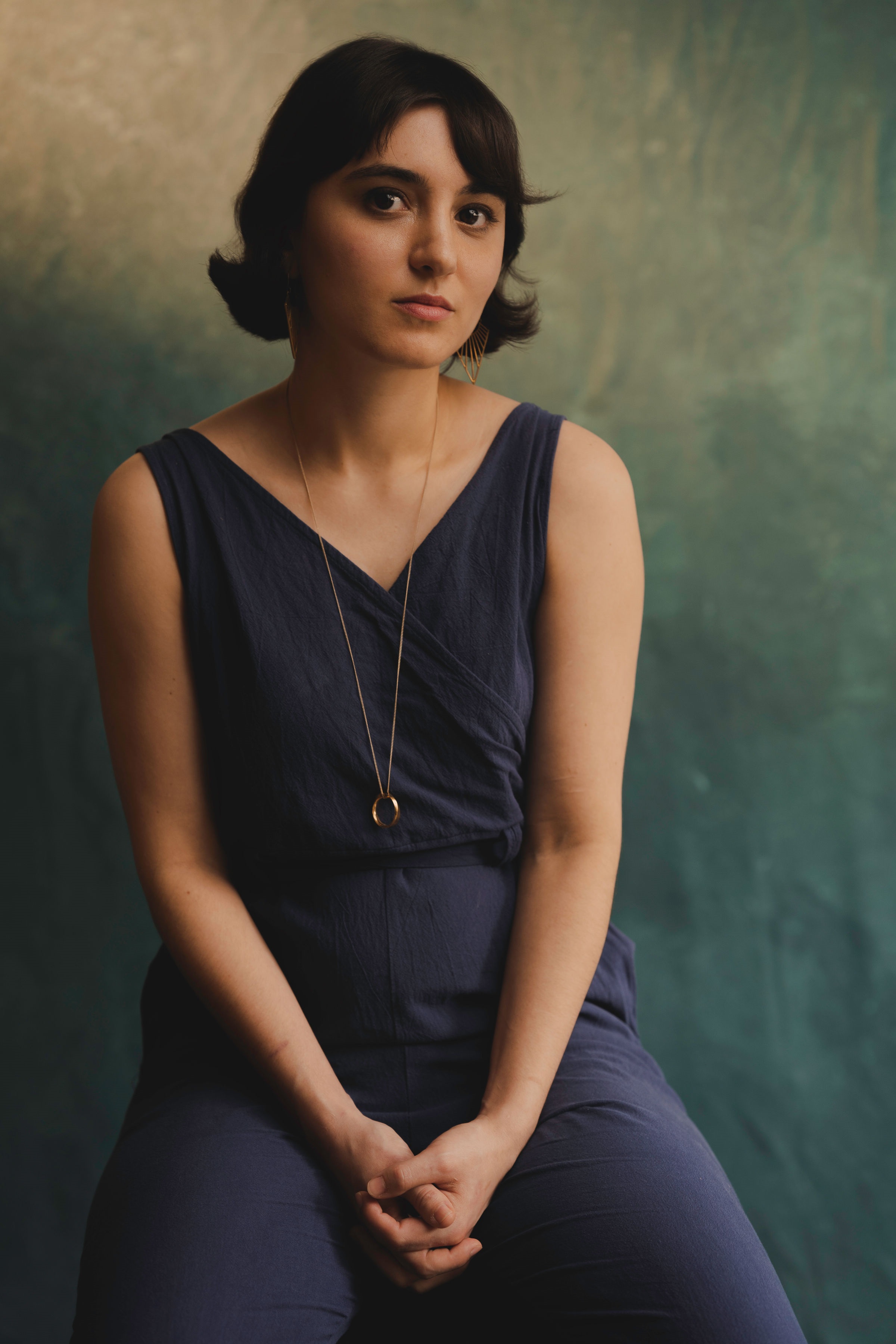 |
|
| photo: Dena Denny | |
Antonia Angress was born in Los Angeles and raised in San José, Costa Rica. She is a graduate of Brown University and the University of Minnesota MFA program. Her debut novel, Sirens & Muses (Ballantine, July 12, 2022), follows four artists drawn into a web of rivalry and desire at an elite art school and on the streets of New York.
Handsell readers your book:
Sirens & Muses is a campus novel about artists finding their way through life and love. It's queer, sexy and cerebral--and funny! Think The Marriage Plot meets Fates and Furies meets Portrait of a Lady on Fire.
On your nightstand now:
I'm currently reading Lauren Collins's When in French and Frank McCourt's Teacher Man, both as research for my next novel, which is about a language teacher and draws on the years I spent teaching Spanish to elementary and middle school students. In that spirit, I've also been rereading Ms. Hempel Chronicles by Sarah Shun-lien Bynum, one of my favorite novels about a teacher and one of my favorite novels, period.
Favorite book when you were a child:
I was obsessed with Alice's Adventures in Wonderland and can still recite "The Walrus and the Carpenter" from memory (this is my best--and only--party trick). One of my cherished possessions as a kid was this beautiful hardcover edition of The Annotated Alice, featuring Martin Gardner's extensive annotations on the Victorian references, mathematical concepts and wordplay that Lewis Carroll embedded in the story.
Your top five authors:
Five is too few, but if I must: Zadie Smith, Jennifer Egan, Donna Tartt, Susan Choi and Sarah Waters.
Book you've faked reading:
I majored in comparative literature in college, and there was a literary theory course that everyone had to take. I muddled through a whole bunch of Derrida that semester, but I could not possibly tell you what that guy was going on about.
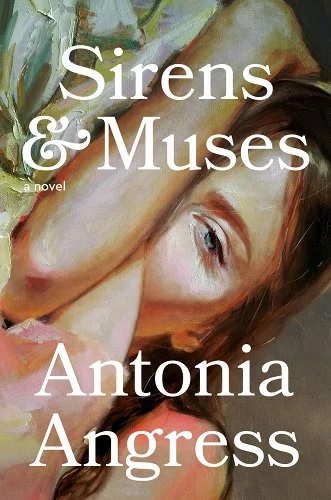 Book you're an evangelist for:
Book you're an evangelist for:
So many! Bobcat by Rebecca Lee is the best short story collection you've never heard of. My Name Is Asher Lev by Chaim Potok and The Flamethrowers by Rachel Kushner are my two favorite examples of the Künstlerroman (literally, "artist's novel"--a genre I'm very into, obviously). Kaitlyn Greenidge's We Love You, Charlie Freeman is a book I have a hard time describing to people, but trust me when I say it's brilliant. I loved Lee Cole's Groundskeeping so much that I hunted down his e-mail address and sent him a fan letter. While writing Sirens & Muses, I read tons of campus novels; my favorites are Make Your Home Among Strangers by Jennine Capó Crucet and The Idiot by Elif Batuman. And I can't stop raving about The Final Revival of Opal and Nev by Dawnie Walton, which needs to be adapted into a prestige TV series.
Book you've bought for the cover:
Mostly Dead Things by Kristen Arnett--for the cover (that flamingo!) and the content, which is marvelous.
Book you hid from your parents:
My parents are both big readers. They let me read whatever I wanted and encouraged me to borrow books from their shelves. There was one exception, though: American Psycho by Bret Easton Ellis. Once, when I was maybe 13, I took it, thinking it looked interesting, and my mom freaked out and confiscated it. She told me I could read it when I was older, and we had a big fight about it. I remember trying to steal it back from her a couple of times until finally she hid it from me. After that, I kind of lost interest and to this day I've never read it.
Book that changed your life:
Curtis Sittenfeld's Prep was one of the first adult literary novels I read outside of school, and it made me want to be a writer. She remains one of my favorite authors.
Favorite line from a book:
"In the beginning the Universe was created. This has made a lot of people very angry and been widely regarded as a bad move." --Douglas Adams, The Restaurant at the End of the Universe
Five books you'll never part with:
I hold a special place in my heart for books that have made me cry, TikTok teen-style: The Great Believers by Rebecca Makkai, The Five Wounds by Kirstin Valdez Quade, The Angel of History by Rabih Alameddine, Salvage the Bones by Jesmyn Ward, The Miseducation of Cameron Post by Emily M. Danforth and Fun Home by Alison Bechdel. (I know that's six; a lot of books have made me weep.)
Book you most want to read again for the first time:
I'm a sucker for love stories, mysteries and books about books, and A.S. Byatt's Possession is all three. Spellbound, I read it in a single sitting.
Book Candy
Book Candy
"Dressed to kill: a true crime collection of criminal clothing," courtesy of CrimeReads.
"Behold! A medieval graphic novel carved on an 14th century ivory box." (via Open Culture)
Mental Floss shared eight facts about Philip K. Dick and eight facts about Patricia Highsmith's The Price of Salt.
"How do you organize your books? 9 authors share their favorite shelves." (via the Washington Post)
Discover Great Publishers
Insight Editions' Reinhart Pop-Up Studio
Reinhart Pop-Up Studio expands the boundaries of books with innovative paper engineering, gorgeous illustrations, and engrossing writing. Bringing a new dimension to popular brands and beloved stories, Reinhart Studios creates original pop-up experiences that surprise, illuminate, and delight readers of all ages.
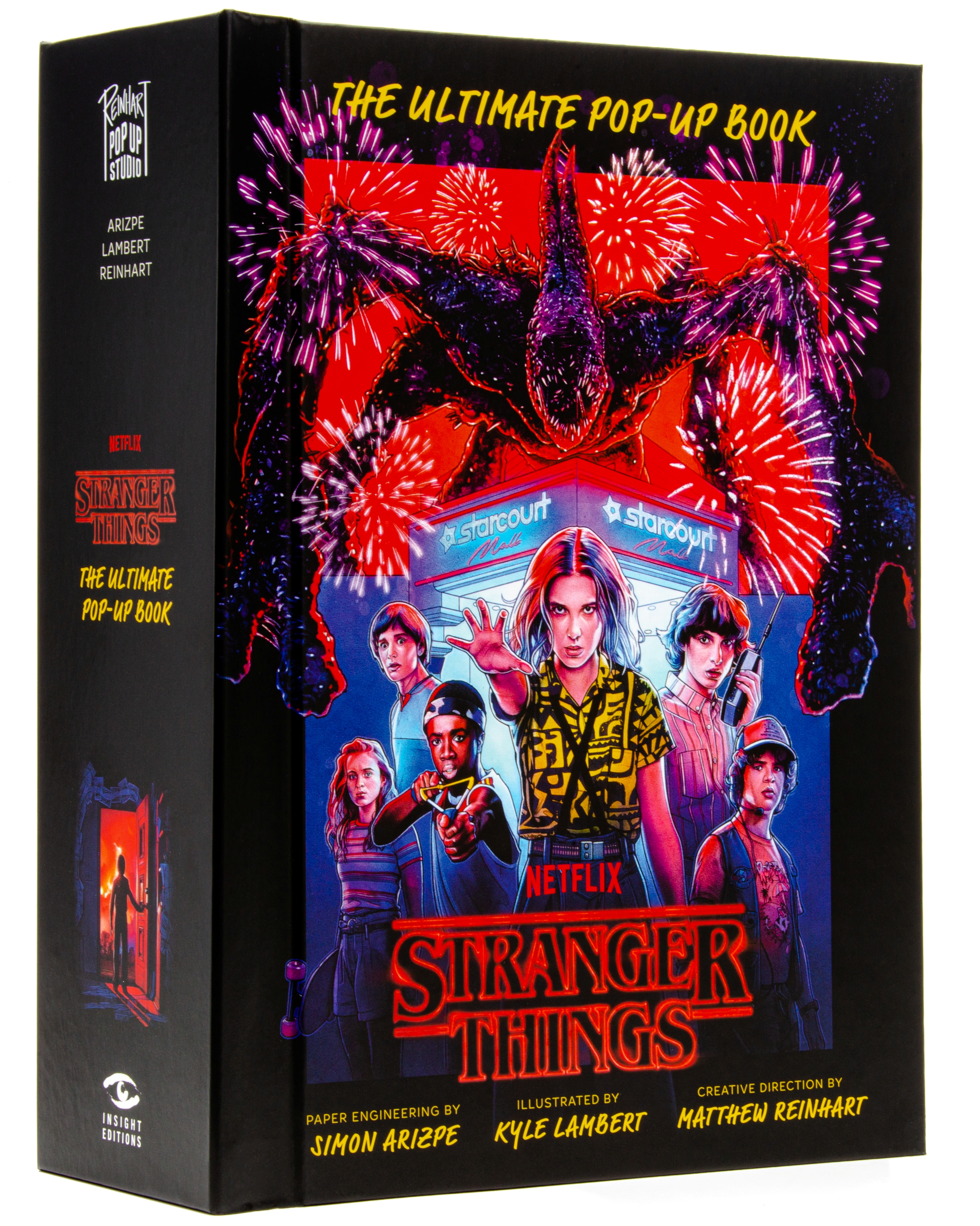 Stranger Things: The Ultimate Pop-Up Book (hardcover, $75, 9781647221263, August 27, 2022)
Stranger Things: The Ultimate Pop-Up Book (hardcover, $75, 9781647221263, August 27, 2022)
Here Paper Engineer Simon Arizpe talks about what it's like working with a beloved series and bringing Demogorgon to life.
Were you a fan of Stranger Things when you took on this project?
Yes, I was a big fan of the show before the idea of making a pop-up Stranger Things ever came up. I had been watching the show from the beginning and always loved the wild storytelling and mystery. It manages to be so rooted in the imagery of nostalgia while feeling like a wholly unique story. Being able to take fantastical concepts like the upside-down and monsters like the demogorgon and figure out how to make them as surreal as they are in the show was such a fun opportunity. When I was offered the project I was so excited, this really is a dream project for me.
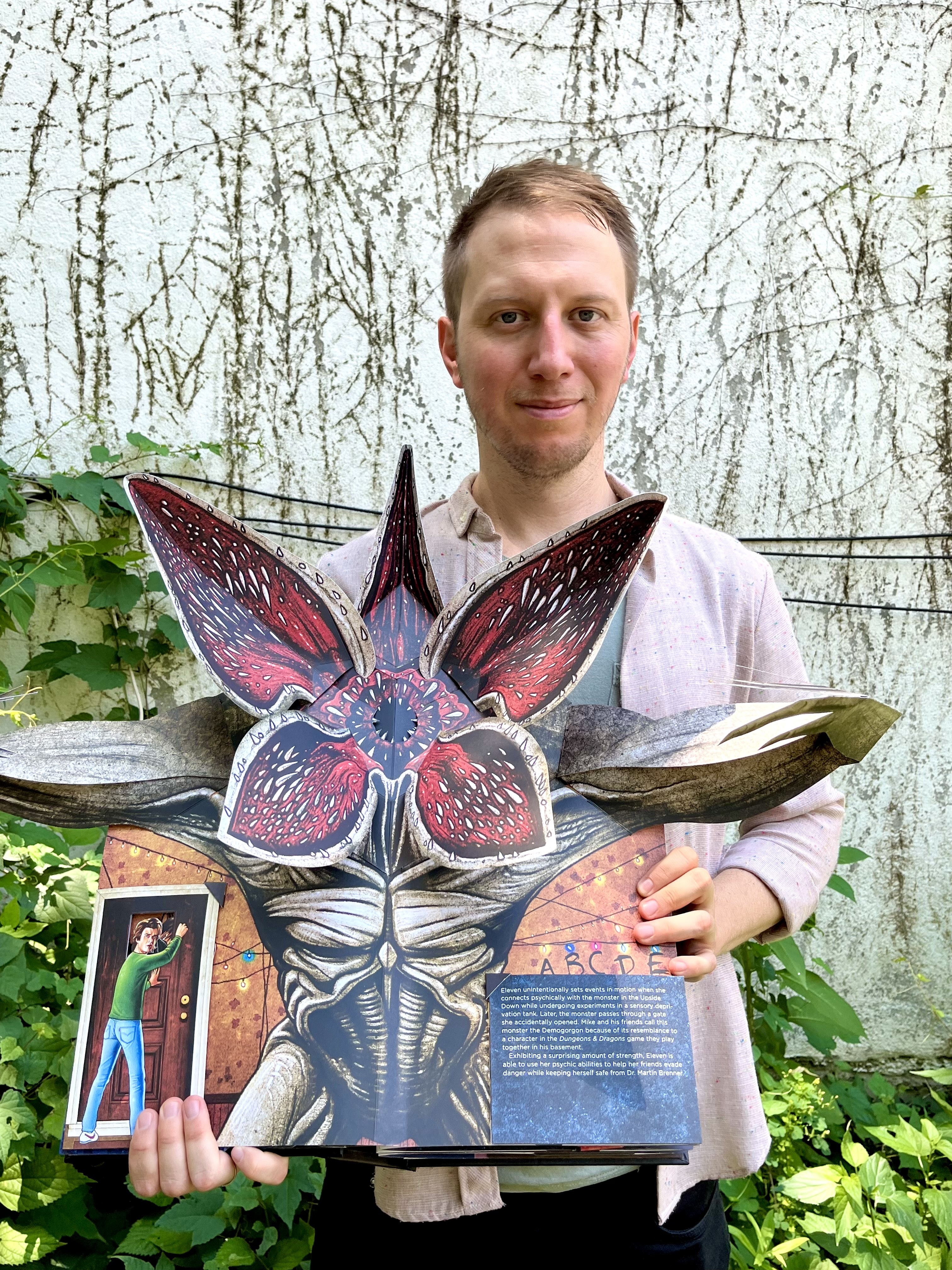 |
|
| Simon Arizpe | |
What's the process for planning out the pops?
It always starts with the idea first. What am I going to make pop-up? What will be the most interesting thing to make move, to reveal or hide? How can I make sure that nothing is expected? All the pop-up elements should be surprising while still telling the story. With Stranger Things, there is already such a full and specific story to tell. For me, it was figuring out which aspects of the story will be the most interesting in pop-up form and separating those out into spreads. I made a sort of wish list of must-have scenes: we need to have a giant Demogorgon, definitely have to have a transformation into the upside-down, gotta have the Starcourt Mall, and it sort of fell into place from there.
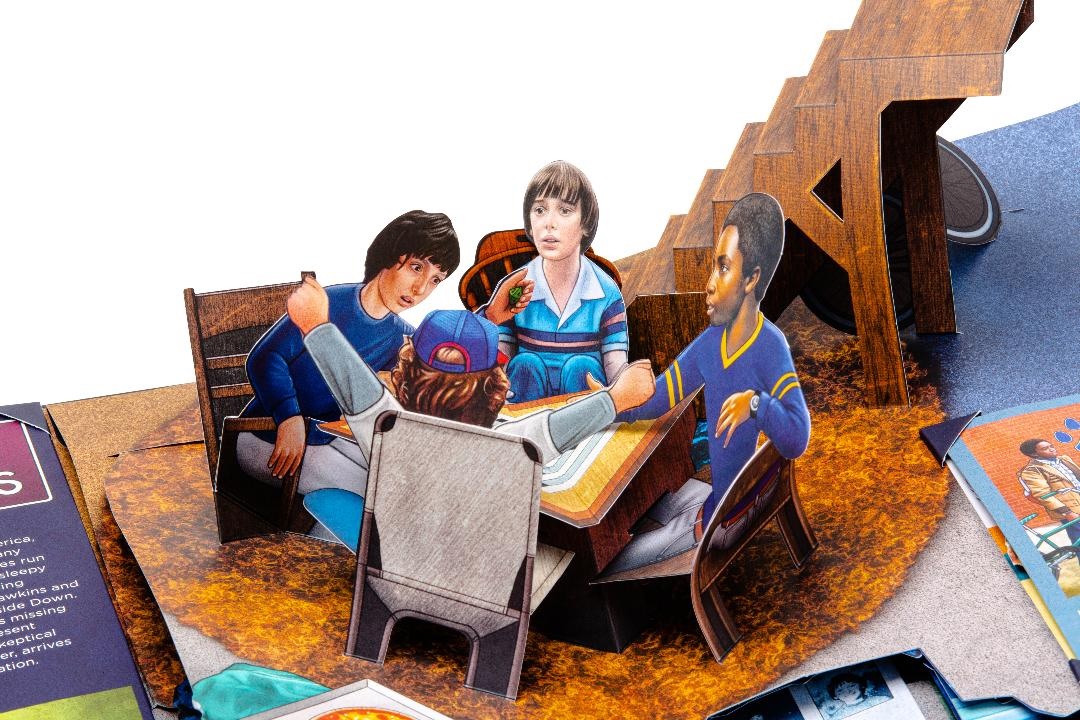 What was the most challenging pop to create?
What was the most challenging pop to create?
I think the most challenging pop for me to create was the first spread with Will Byers traveling into the Upside-Down. The scene starts with the four boys sitting around the table in Mike's basement. Will Byers' missing poster is peaking out from the bottom of the page. As you pull on the poster, the whole scene is transformed from below. The other kids and the basement disappear, and Will is transported to the Upside-Down dimension.
So really there are two pop-ups in one on this page. It was a real challenge figuring out how to hide the whole secondary pop underneath the first, and still make it big and interesting. And that moment is so iconic in the show that I felt like I really had to do it justice.
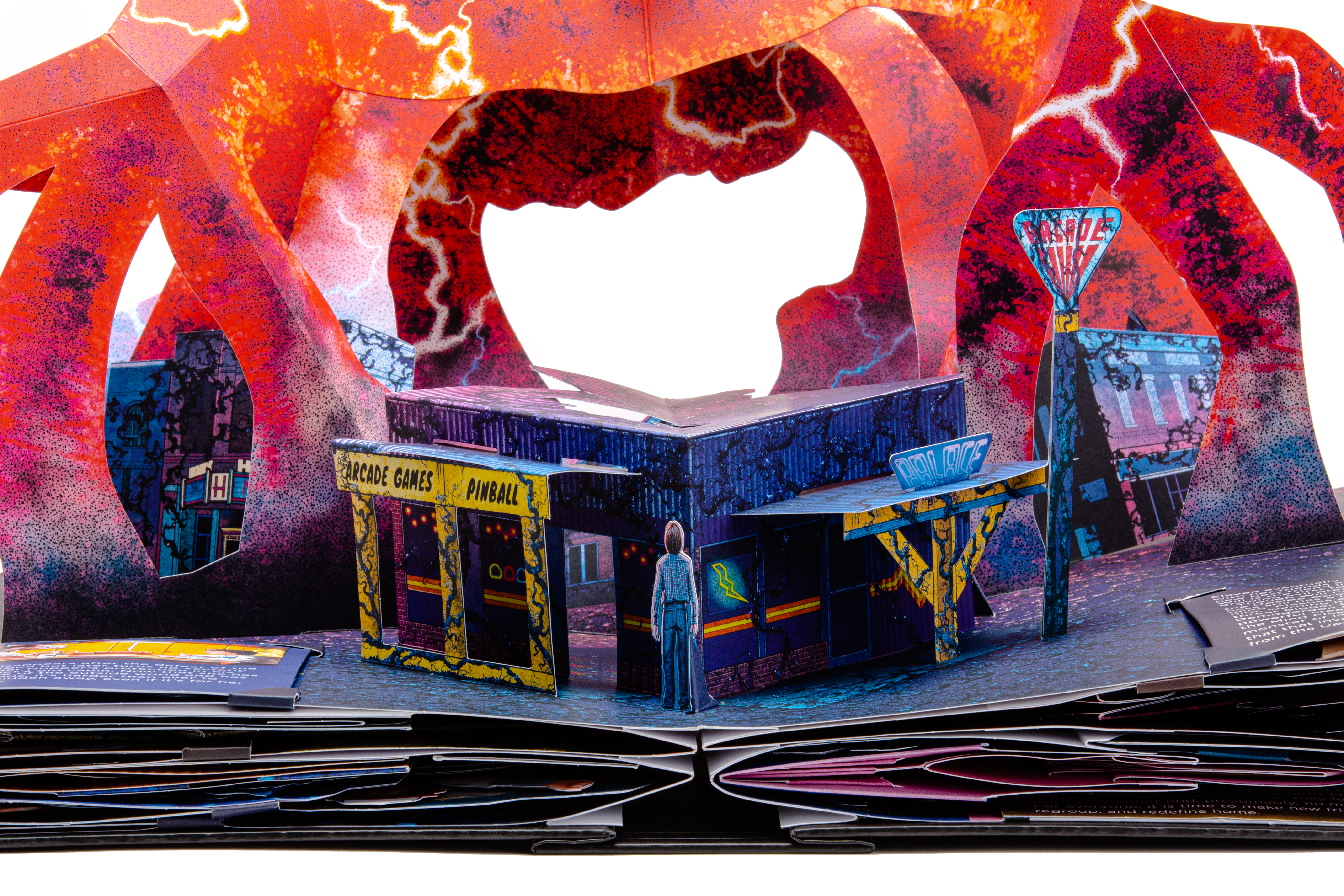 What's your favorite surprise in the book?
What's your favorite surprise in the book?
I tried to hide a lot of little Stranger Things Easter Eggs throughout the book for the fans. My favorite is either Max's signature 'MAD MAX' appearing on the arcade game, which was a real plot point in the start of season 2. Either that or there is a little surprise in the Mall scene on spread 5. There is a pull tab that lets Eleven and Max try on a few different outfits. Because who doesn't like an '80s makeover montage scene?
Kyle Lambert, who was the illustrator on the project, and I had a lot of fun adding in little winks to the fans. I would ask him to draw some character in a specific scene, but it also had to be drawn 'upside down and backwards' so that it would fit into the pop-up eventually. He was a great sport about all my weird specific art requests. I think it is because he is such a big fan of the show as well
Is there a dream project you'd love to create in pop-up form?
Yes there is! My dream project would be to create a Steven Universe pop-up book. I think that show is very special. The art is stunning and has beautiful concepts (like fusion) that would lend themselves well to paper engineering. There is also an overall message of acceptance, love, and compassion throughout the show that I think is so important. If anyone is reading this who knows how to get a hold of Rebecca Sugar (the creator of the show) please send this her way. Rebecca, I would love the opportunity to make a pop-up book out of your beautiful story.
More from Reinhart Pop-Up Studio
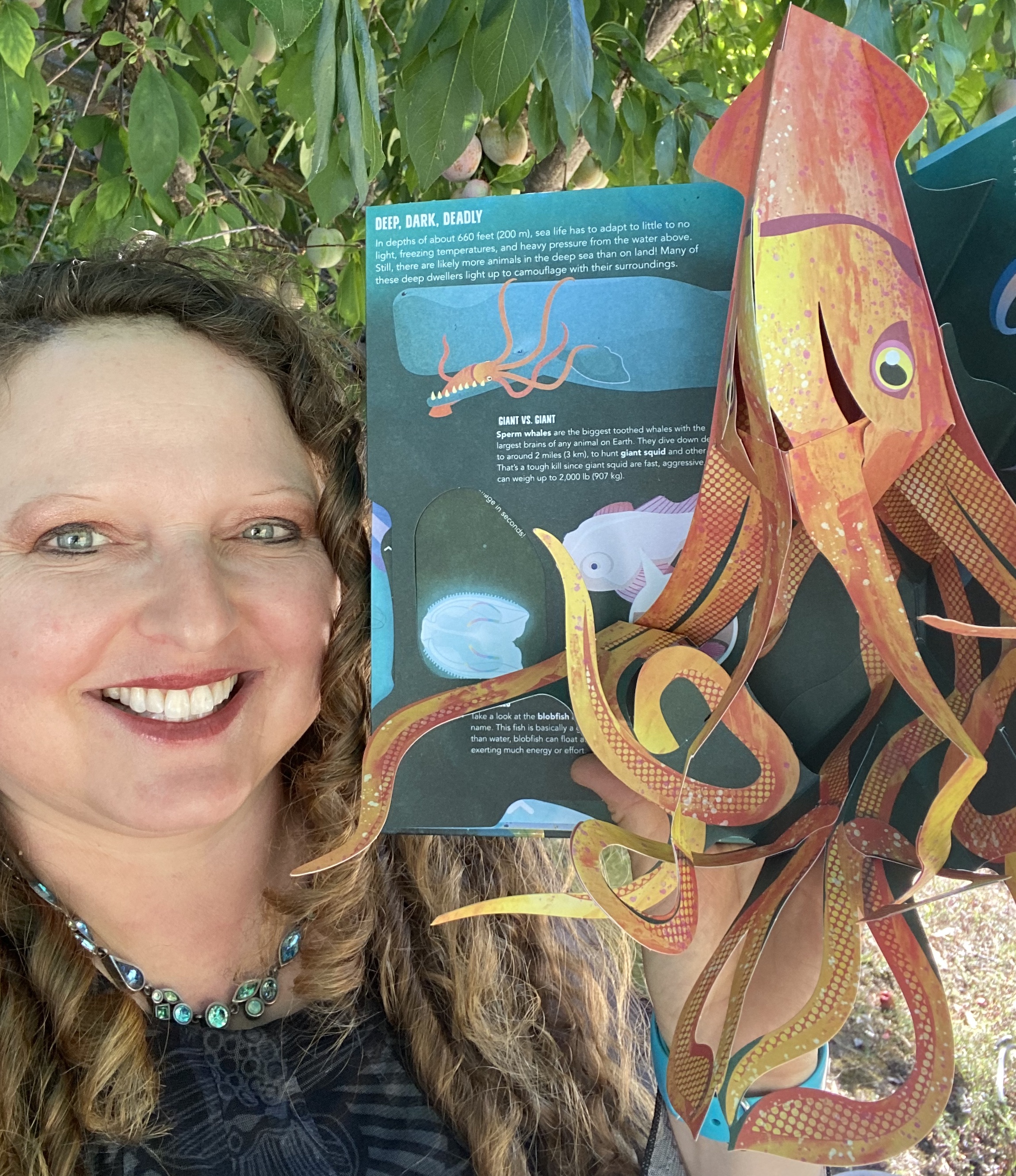 |
|
| Susan B. Katz | |
Teeth, Tentacles, and Tail Fins: A Wild Ocean Pop-Up (hardcover, $75, 9781647227241, July 12, 2022)
Author Susan B. Katz on how it was taking a deep dive into writing a nonfiction pop-up book.
How is writing text for a pop-up book different from a traditional book?
Since Teeth, Tentacles, and Tail Fins is designed in subcategories, it was like writing a bunch of little books within a book. Also, each page features so many amazing ocean creatures that we wanted to make sure the text POPS as much (well, almost as much) as the illustrations. That meant thinking of creative subheadings, engaging questions and info for young readers, and succinct ways to get across details about each fish, mammal, etc. I used alliteration (e.g., fossils or frills?), plays on words (e.g., clowning around--for clown fish), and onomatopoeia (Ice... Brrr!) to grab readers' attention in each section. Fitting all the information into the text box forced me to choose my words very carefully.
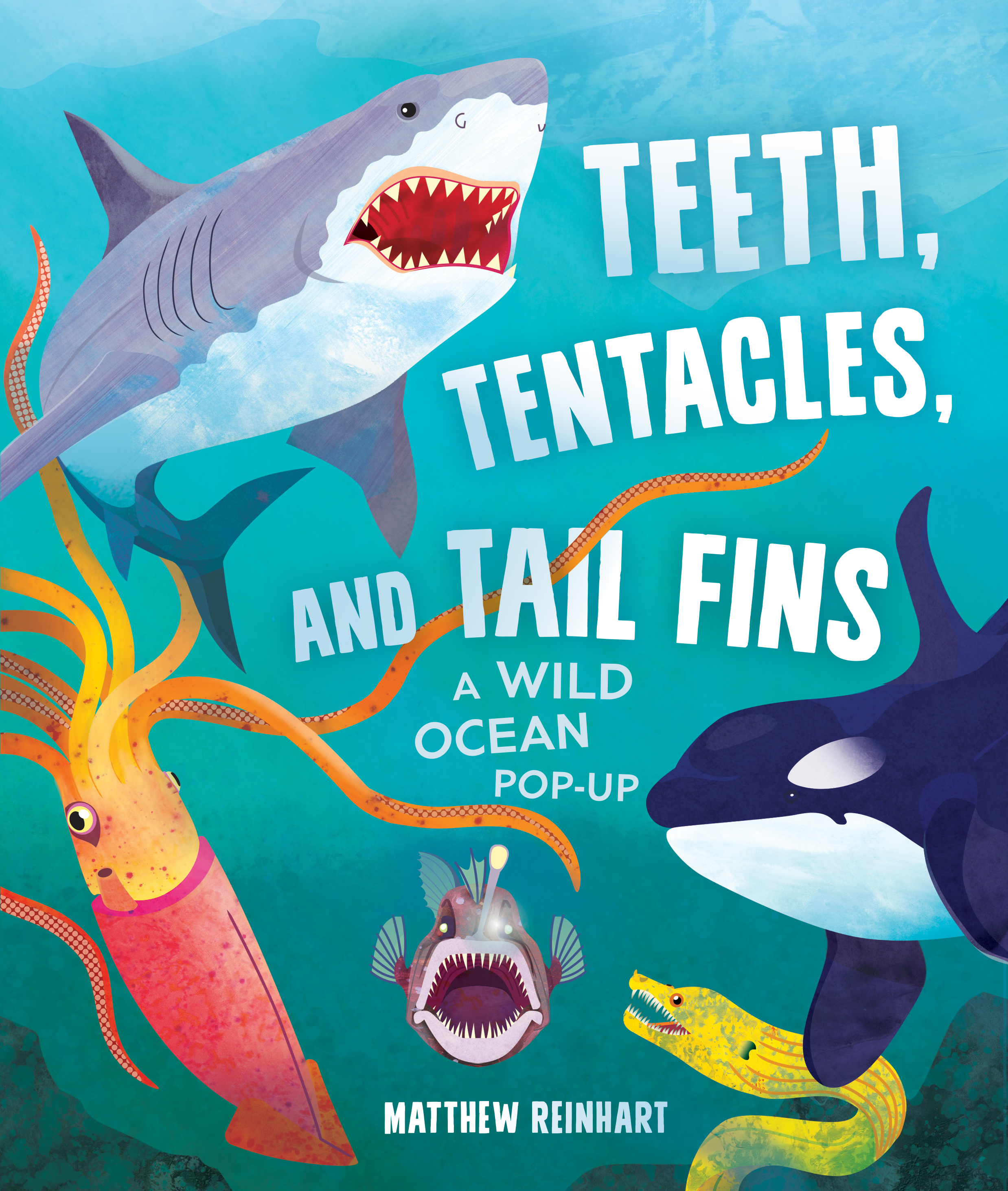 How do pop-up books help young readers experience and understand nonfiction?
How do pop-up books help young readers experience and understand nonfiction?
As a former educator, aunt, and author, I've seen the delight that pop-up books spark in young readers' eyes. With each turn of the page, and every pop that jumps off the page, children are instantly engaged in the book. It's an interactive learning experience. What we, in education, call "chunking" information happens naturally as almost all of the text is about the length of a social media post. It helps children digest and process STEAM information in an accessible way. Teeth, Tentacles, and Tail Fins caters to the natural, roving curiosity most children have at the pop-up stage.
What did you learn that surprised you about ocean creatures?
I'm an avid snorkeler and photographer, and have gone whale watching many times. I learned that baleen whales actually don't have any teeth! They have baleen plates (kind of like fingernails) that filter out shrimp, krill, plankton, and small fish for them to swallow. Also, as if the ocean wasn't amazing enough--through my research I found out that colossal squid can grow to be as long as a semi-truck! And did you know that elephant seal pups can gain 10 lbs/day when they're first born? (I didn't!)
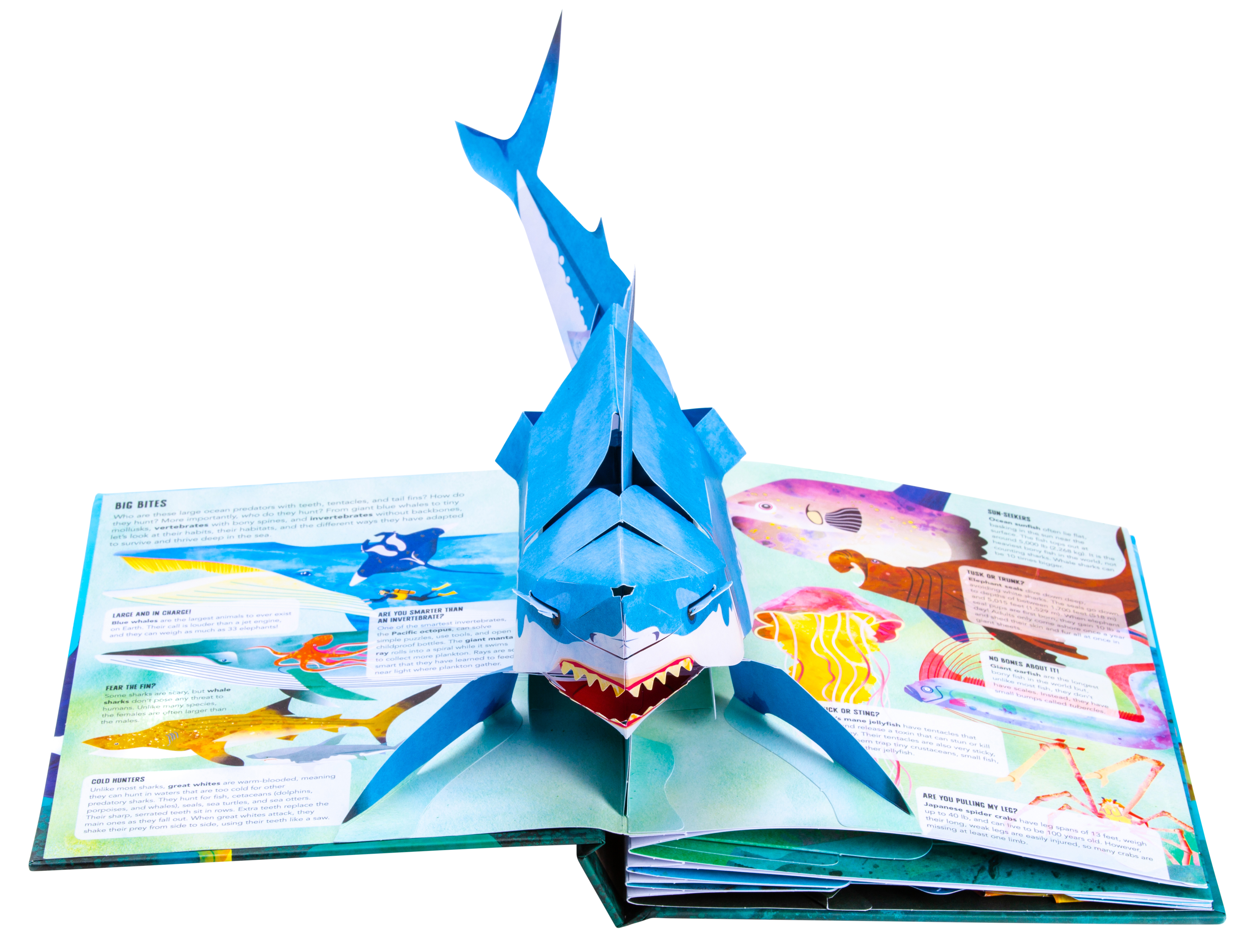 How did you and Matthew Reinhart collaborate?
How did you and Matthew Reinhart collaborate?
Matthew sent me (through our editor) a spreadsheet of potential facts we could include. From there, I researched more about each animal, revised it into "kid speak," and added language that engages readers. I really admire Matthew's palette, design, and accomplishments so I am honored to have written a pop-up book that he illustrated.
What makes pop-up books so appealing to kids?
Kids will beg to come back to the book time and time again. Each time, they'll learn a new fact, pull a different tab, or investigate the pop-up teeth, tails, and tentacles. The design and thought that goes into the craft of making pop-up books is a craft that really takes an engineering eye to make everything durable, foldable, and, most importantly: FUN!
Great Reads
Rediscover: White Noise
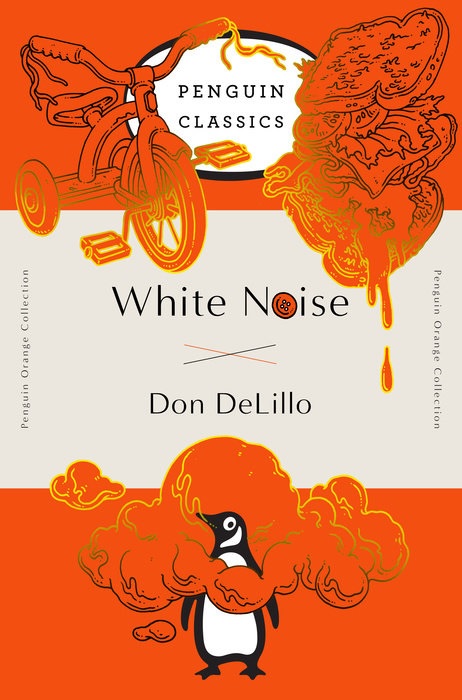 White Noise, an adaptation of Don DeLillo's 1985 novel written and directed by Noah Baumbach, will open the 79th Venice Film Festival on August 31 before appearing on Netflix later in 2022. It stars Adam Driver as Jack Gladney, professor of Hitler studies at a midwestern college called The-College-on-the-Hill. He and his fourth wife, Babette (played by Greta Gerwig) care for four children and step-children and are both terrified of death. When a train full of chemicals derails, Gladney's town is subsumed by the Airborne Toxic Event, a catalyst for thematic explorations of death, consumer culture, academia and religion. The film also stars Don Cheadle, Raffey Cassidy, Sam Nivola, May Nivola, Jodie Turner-Smith, André L. Benjamin and Lars Edinger.
White Noise, an adaptation of Don DeLillo's 1985 novel written and directed by Noah Baumbach, will open the 79th Venice Film Festival on August 31 before appearing on Netflix later in 2022. It stars Adam Driver as Jack Gladney, professor of Hitler studies at a midwestern college called The-College-on-the-Hill. He and his fourth wife, Babette (played by Greta Gerwig) care for four children and step-children and are both terrified of death. When a train full of chemicals derails, Gladney's town is subsumed by the Airborne Toxic Event, a catalyst for thematic explorations of death, consumer culture, academia and religion. The film also stars Don Cheadle, Raffey Cassidy, Sam Nivola, May Nivola, Jodie Turner-Smith, André L. Benjamin and Lars Edinger.
DeLillo's postmodern breakout book, his eighth novel, won the National Book Award for Fiction and was included in Time's list of Best English-language Novels from 1923 to 2005. DeLillo has also received the Norman Mailer Prize for Lifetime Achievement, the Library of Congress Prize for American Fiction, the Jerusalem Prize and the PEN/Faulkner Award, among numerous other accolades. His other novels include Libra (1988), Mao II (1991), Underworld (1997), Falling Man (2007) and Zero K (2016). His most recent book, The Silence, came out in 2020. In 2016, Penguin Classics released White Noise as part of its Penguin Orange Collection ($18). --Tobias Mutter
| Advertisement The Primal of Death Must Be Defeated |


